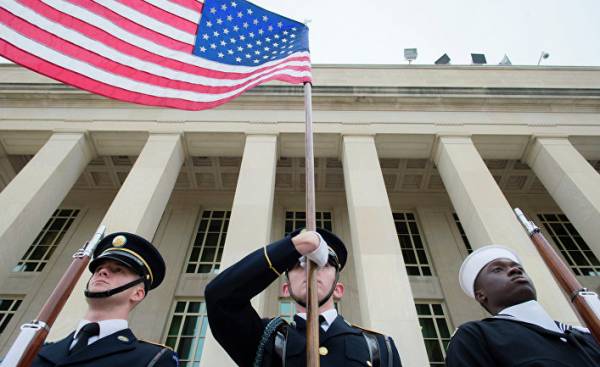
In the last ten years rarely made a serious effort to estimate U.S. costs for the war objectives, policy commitments, long-term projects in planning and construction of warships. Legislature and the U.S. Congress are unable to carry out reforms in any of the key areas related to defence and foreign policy funding, while a significant portion of the budget is military spending, and every year the situation repeats.
The preparation of the budget is based on programmes and visions that dominated in the era of Eisenhower administration. These programs were implemented during the administrations of Kennedy and Johnson, but today they lost their contents.
As for the zealous attempts to develop defensive programs in the coming years, the impact for them was the law on control over the budget, which, however, was presented in a form that Congress was unable to ratify it. All efforts at objective assessment of the budget prevented the joint Commission, which was established decades ago in the era of former President Reagan.
The most striking fact is how disastrous were the attempts of the last two US administrations and the Senate to perform and justify military spending. If besides to take into account the cold war period, we see that the United States waged war almost every year since 1941. Since late 2001 the United States began to participate in these wars, and given the rise of terrorist and extremist activity, there is no prospect that in the future the need to use military force will disappear.
Perhaps the cold war is over, but America still faces threats of a strategic nature. On the one hand, these threats come from Russia, with another — are associated with the emergence of China as a global player in a world that is becoming multipolar.
In the formation of national security strategy we cannot assume that war is the natural state of things, but at this stage of the war and constant threats are part of the harsh reality.
However, we see that the US administration and Congress deal with war only as a temporary phenomenon. This problem is solved by creating additional categories in the short-term budget items, such as costs for emergency operations abroad, which would seem to reflect the cost of the war, but in fact they have become a kind of cash reward, actually — corruption scheme, and also the mechanism of exceeding the “ceiling” of defense spending provided for in the law on the control over the budget.
The reports prepared by the Executive authorities, it seems, to hide the real military expenditures and in no way take into account the link between strategy, performance and prospects of the end of the war. Often have incomplete records regarding the civilian aspects of the war. Military and civilian budgets are developed by various units and their review by specialized committees on armed services and foreign Affairs in the Senate and the house of representatives and certain divisions of the appropriations Committee in the lower house of Congress.
Behind the false promises of a “comprehensive government approach” hides observed in the modern world the gap between what offers a comprehensive approach to civilian and military expenditures, and the policy of “budget holes” in which the state Department and the U.S. Agency for international development are often divorced from the realities of warfare, while the United States Department of defense focuses on tactical success, rather than success in political, economic areas, or strategic reasons related to the conduct of war.
The work of the Senate in this regard are not sufficiently effective, as its members are, ironically, passionate about what criticized the administration for lack of strategy.
However, the Senate may also be subject to criticism for the fact that failed to approve the need to develop adequate reports on the budget in the period of warfare and detailed assessment of the relevant costs.
If you don’t consider the independent efforts of the specialized Committee of the U.S. Congress, neither the Executive authorities nor the Congress published an official report on current military expenditures of the United States, had not considered what it consumes, the US military budget, and did not indicate the need to prepare comprehensive reports that reveal their effectiveness.
As the congressional research service of the United States and the Department in General accounting has produced a number of reports that provide the necessary information about the cost of American wars and the issues that should also be considered outside the framework of the reports. Now the Congress is closest to to establish a reliable system for formal review reports prepared by the U.S. Department of defense on Iraq and Afghanistan, but these documents will not affect the cost of the wars and the size of the military budget of the country.







